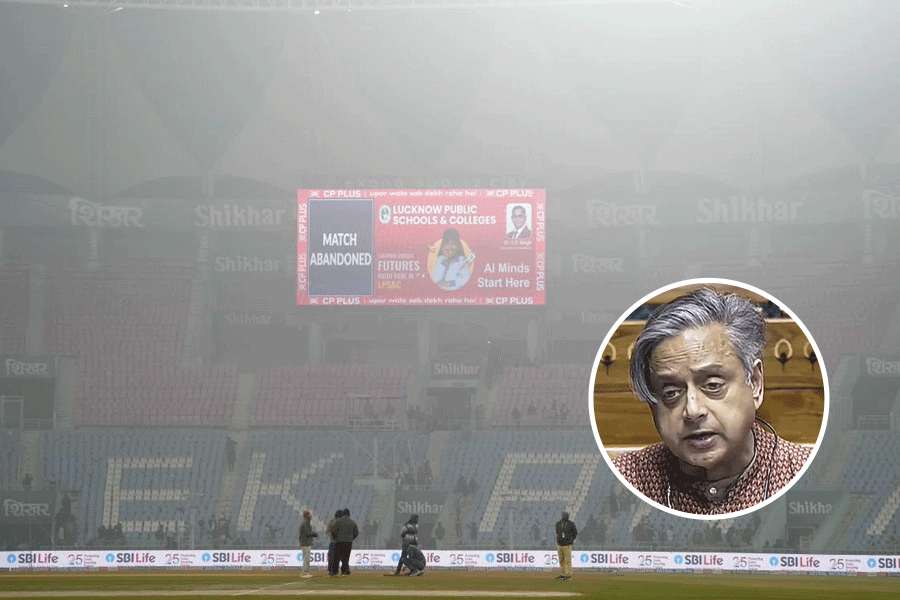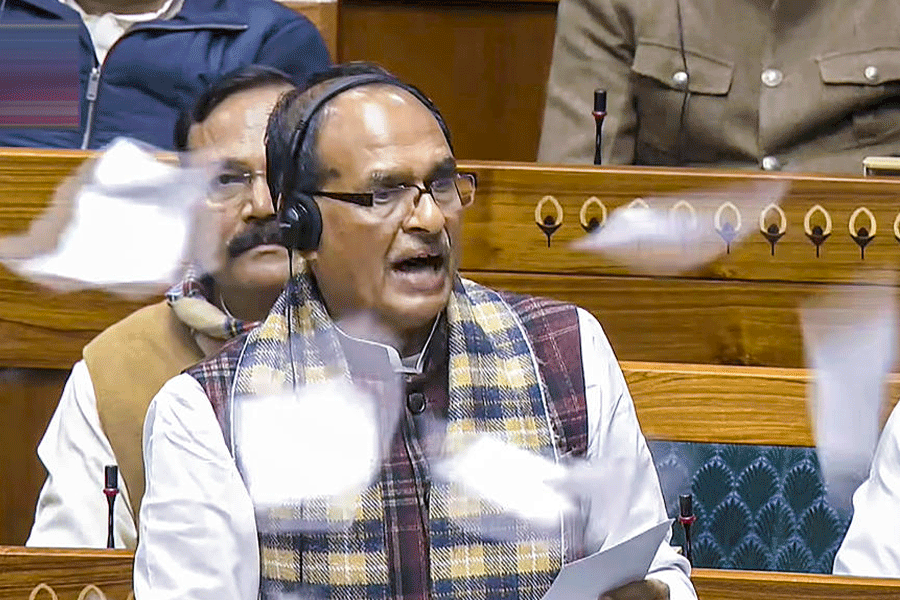It’s interesting that Ganges Art Gallery calls its current exhibition — on till June 10 — Objects, referring in the concept note to Stephen Greenblatt and his classification of responses to objects in terms of wonder and resonance. What the viewer may wonder at is wonder itself, at least in the sense Greenblatt described it. Plentiful in the Renaissance era, the ‘wow factor’ in encounters with things and events has been steadily devalued, particularly in the context of the gratuitous exotica alien cultures are expected to offer to the jaded Western eye.
But the exhibition does indeed remind viewers that works of art are objects, though what objects are deemed art may sometimes seem arbitrary with modern artists from Picasso and Duchamp to Warhol and Rauschenberg proving the ‘artworthiness’ of trivia. The language of junk has, of course, been further extended by the likes of Cornelia Parker, Sue Webster and Tim Noble. However, the focus in this show, specifically, seems to have been on work that makes use of objects and that which incorporates their images instead of the objects themselves. There are thus two clear categories.
US-based artist Nandini Chirimar belongs to the first. She returns to her roots in search of objects imbued with cultural meaning. With resonance, that is. But it is the basic “thingness” of things that the artist seeks to extract from their social accretions. The sensuous totality of their shape, texture, colour and pliability. So the sacred thread, the janeu, shorn of its role of signifier, is reduced to an element in Chirimar’s art, leaving delicate, tactile, fluid patterns on the paper, combined with wicks, twigs and pencil sketches.
 |
| Objects of worship VII by Nandini Chirimar |
Similarly with bangles, the “round sound makers…..worn so you will hear of my arrival”, as an accompanying line says. The ‘roundness’ is their basic shape prised out of cultural moorings but the rest of the line immediately invests them with allusions all Indians are familiar with. Chirimar’s real appeal lies in the finely-woven mise en scène she conjures with disparate patterns and material.
However, objects imported without creative imagination will remain superfluous as playing cards are in Partha Shaw’s Game of Life. Yet, the heaving density of its chequered layout effectively evokes a claustrophobic cityscape. Anita Gopal’s Eye-catcher, a mixed media assemblage, primarily of different types of paper, boasts of a kind of extravagant poise.
But the real eye-catcher is the found kantha Paula Sen Gupta has worked upon with serigraphy, embroidery and appliqué, called Birangana. Hung up to reveal both sides, it counterpoints the innocence of quaintly gauche images of railway carriages with lethal weapons. The conflicting signals speak of a fractured narrative, an aborted fantasy. You can see why: the name refers to the Bangladesh war of liberation in which women were tortured and raped and were later hailed as birangana by Mujibur Rahman, according to the exhibit note.
The theme of war and violence continues in her series, Gallery of Anxiety. To depict the looming threat of war, the artist uses two layers. The bottom is of paper with wryly stylized images in etching and aquatint: hand grenades, missiles, guns and so forth, military hardware belching folkish curlicues of smoke. On top is the acrylic sheet of the box frame with serigraphic hills and trees, an idyll disrupted by soldiers, helicopters, dying men, all of it induced by the gallery lights to cast dark shadows on the paper below. The litter of references may not always be clear but the irony in a phrase like ‘war without permit’ certainly is.
Tapati Chowdhury’s sketch of overlapping chairs is understated in treatment. Placed against a vertebral column, the chairs and, what looks like a foot stool, take on a somewhat chilling sense when you notice the title, Deposition, which may bring arduous hours of interrogation to mind. But the viewer will delight in Avijit Mukherjee’s untitled work. It’s a suite of 20 ink sketches of spry, playful whimsy and inspired child art forms, doodled with spontaneity but in an unerring hand. Safety pins, pricking all kinds of objects, are recurring motifs, sometimes glimpsed through a ‘window’ cut in the paper surface, while scribbles of birds and animals and patterned terrains come tumbling out of a buoyant imagination.
Mahjabin Majumdar’s surrealist phrases — like a deer with eyeless sockets through which pass strings of pearls — appear self-conscious in their solipsistic romanticism. But the meticulous depiction gives a palpable individuality to the objects here, the pearl strings. And Nantu Behari’s sculpture of a bloated head is rather usual but for the surface of tiny, receding craters.










